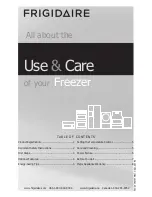
14
operation
Therefore, if excessive ice forms on the louvers, stop the fan for a few
minutes. With the fan off, the water flow will increase in the vicinity of the
louvers and reduce the ice buildup.
3. Under extended extreme cold conditions, it may be necessary to operate
the fan in reverse. This forces warm air out through the louvers, melting any
accumulated ice—adequate heat load must be available. Reversal of fan
should only be done at half speed or less. Reverse operation of the fan
should be used sparingly and should only be used to control ice, not to
prevent it. Reverse fan operation should not need to exceed 1 or 2 minutes.
Monitoring is required to determine the time required to melt accumulated
ice.
Operating the fan in reverse at half speed for prolonged periods
during subfreezing weather can cause severe damage to fans and
fan cylinders. Ice can accumulate inside fan cylinders at fan blade
plane of rotation and fan blade tips will eventually strike this ring of
ice, damaging the fan blades or cylinder. Ice can also accumulate
on fan blades and be thrown off, damaging fan cylinder or blades.
Allow a minimum of 10 minute delay between reverse operation
and forward operation during subfreezing weather to permit ice to
dissipate from fan blades and fan cylinders. See Fan cycling limits
on page 11 of this manual.
4. With no heat load on the circulating water, icing cannot be controlled
effectively by air control during freezing weather. Towers must not be
operated with reduced water rate and/or no heat load during
freezing weather. If the circulating water system cannot be shut down,
water returning from the process should be made to bypass the tower. If
a bypass is used, all water must be bypassed without modulation.
Warning










































